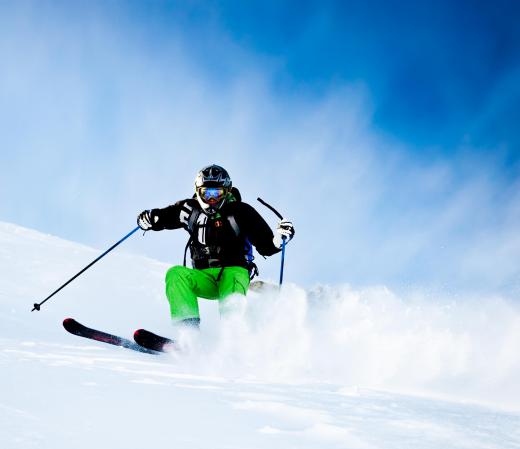Ski masks and hats are available in different styles, colors, and materials. Chilly winds and falling snow can cause windburn and icy temperatures on the skin’s surface. Face masks, balaclavas, and beanies are available in various materials and are the most common types of ski masks.
Neoprene face masks cover the neck area up to the crown of the head in the back and up the face including the nose and mouth in the front. The eye area and forehead are exposed and are meant to be covered with ski goggles and a hat respectively. The face-hugging neoprene ski masks look sleek and modern and are great for guarding against wind chill. Some styles have racing stripes. A range of colors such as red, purple, and blue are usually available along with basic black.

Beanies are more hats than ski masks and are called “toques” in Canada. Beanies are usually knit and rest on the head as well as cover the ears. Some beanies have ear flaps and ties attached to the flaps that can be fastened under the chin. Some beanies have a decorative tassel on the top, while others have rolled edges, or bills like baseball caps.

Balaklava is located in the Crimea. The British knitted head coverings to send to British troops serving in the cold areas of Balaklava and referred to the head coverings as balaclavas. Traditionally, balaclavas were knitted with wool, but today's versions in thermal fabrics such as polyester and micro fiber wick away moisture and are fast-drying. Balaclavas are good for keeping the head and neck warm, and may eliminate the need for a scarf.

Some balaclavas expose the entire face, but cover all of the neck and head areas. Some balaclavas cover the entire face and head with just three holes for both eyes and the mouth left uncovered. Some skiers prefer neoprene balaclava ski masks as cloth balaclavas can get damp from breathing in them, whereas neoprene does not.
Worn like a second skin, neoprene balaclava ski masks usually just have eye areas uncovered to fit ski goggles. There are two kinds of neoprene - standard and Floprene. Floprene is more breathable than Neoprene, but Neoprene keeps in the heat. Some ski masks are made of a combination of materials such as neoprene, spandex, and fleece. Spandex added to ski masks often gives added elasticity to the ski masks so they are easier to put on and take off.
